Fracture Review
Fracture
If you absolutely, positively can't wait for Gears of War 2, you might be tempted to buy Fracture - Stu thinks that you shouldn't.
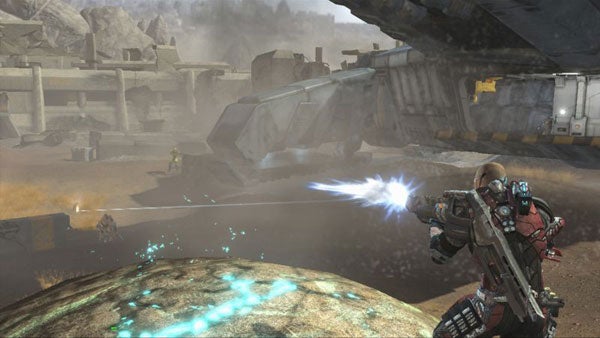
Verdict
Key Specifications
- Review Price: £39.99
”’Platforms: Xbox 360, PS3 – Xbox 360 version reviewed.”’
There’s an sour irony in the fact that you’ll spend most of your time in Fracture moving earth and rock around, because if there was ever a game that buried its best ideas under a mountain of rubble, this is it.
The strongest concept in the game is its technical USP and the only thing that gives this third-person action game any real sense of identity. The feature in question is terrain deformation; Brody, your hideously generic, armour-clad, futuristic super-soldier is packing a weapon – the Entrencher – that enables him to raise and lower small sections of the landscape at will. Need cover? Zap the ground and form a handy hummock to hide behind. Shields running low? Blast a hole or trench where you can rest and lick your wounds for a second. The Entrencher is a pretty useful tool and one you’ll find yourself employing it to create ramps over barriers, tunnels under gates and even scatter foes with a well-aimed blast. Watching the landscape ripple and deform as you fire is about as close as Fracture gets to a wow moment.
OK, so the grenades are pretty cool too. Two simply create bigger piles and divots while blasting enemies to kingdom come, but another forms instant pillars of rock that can raise metal platforms or lift chunks of broken bridge into the air. The final effort unleashes a nasty little mini-cyclone that sucks in your foes then spits them out to their doom. Watching all this work, the scenery deforming before your eyes is the sort of impressive, showcase stuff that would have had us gasping when the Xbox 360 first arrived. These days the novelty lasts, well, crumbs, for about an hour at least.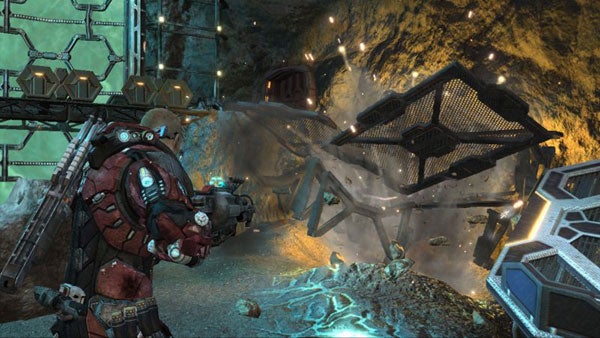
And once that hour has gone you’re left with a competent but thoroughly unexciting third-person action game. I’m not sure how or why it happened, but at some point somebody involved in the development of Fracture clearly felt that it could do with looking a bit more like Gears of War, with possibly a spot of Halo 3 thrown in for good measure. Well, if that’s what they wanted, that’s what they got, but the end result feels derivative and depressingly bland.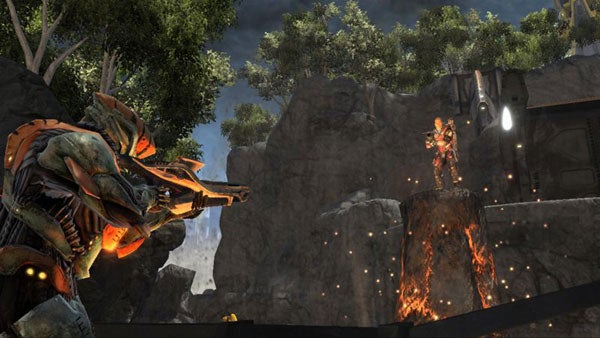
Frankly, the storytelling is so perfunctory that it’s hard to even remember what I’ve experienced of the plot, but the actual premise isn’t all that bad. A few hundred years in the future America is in the midst of an economic and environmental crisis, ending in a schism between the Western US states of Pacifica and the Eastern states of Atlantica. The Atlantica boys, including our hero, have adopted high-technology and cybernetic implants. The Pacificans have gone in for genetic mutation. To cut things short it all kicks off and you’re off to San Francisco to sort the renegade Pacificans out. There are some twists and turns and characters introduced, but if you want a game with the grim urgency of Gears or the epic sci-fi feel of Halo 3 this isn’t it. It’s not even as atmospheric as this year’s Turok.
The enemy design suffers too. You’d expect a range of genetically-engineered abominations, but instead we get a range of different chaps in different coloured suits. Some of them are pushovers. Some, like the flying guys who spit rockets out at you, are really, really annoying. None of them, however, are particularly interesting or intelligent. It’s now six years since Halo showed how AI should be done on a console, so why are we still putting up with bozos who stand still while you shoot at them or who do the old duck-shoot-duck routine until you get them? At no point is there any sense that you’re fighting an organised or responsive foe. Instead, Fracture throws numbers at you in the hope of giving you a challenge. It doesn’t work. Despite all the fun you might have with the terrain deformation weapons, you’ll spend most of your time grinding your way from one area of foes to the next, rarely using your special capabilities for anything more than some quick cover here or a dirty way to disrupt an enemy attack over there.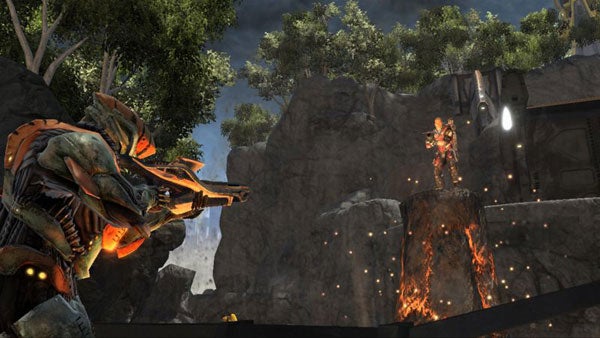
You see, the game doesn’t encourage you to use your imagination. There are puzzles, but 90 per cent of the time the solutions are virtually handed to you on a plate. When they’re not, you can spend a ridiculous amount of time working out what to do because the information isn’t there or – in one case – an onscreen prompt is misleading. Remember how Bioshock or Deus Ex or Half-Life 2 gave you a range of tools with which you could deal with a situation then left you to improvise and have fun? Well, Fracture could have done the same thing, but instead it merely places you in situation after situation where all the tools are readily at hand and there’s really only one way to move on. Even Army of Two showed more level design nouse than this.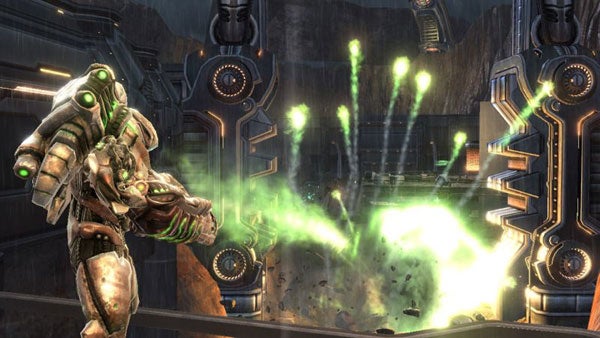
Of course, it would have helped if the art team had used a little more of their imagination too. The Gears of War and Halo 3 influences are everywhere, yet the game rarely moves beyond a palette of greys and browns in terms of scenery, and there’s no sign of the ruined beauty of the former or the lush environments and alien aesthetic of the latter. It’s not a bad looking game – there’s plenty of background detail and the lighting, textures and animation are all up to scratch – but there are few points that elicit any response beyond ‘that looks pretty good.’ Maybe we’ve been spoilt, but I’d be gobsmacked if, in five years time, somebody showed me a screenshot of Fracture and I could identify what game it was.
The closest thing Fracture has to a saving grace bar the terrain deformation is a reasonable range of weapons that go beyond the usual Doom/Quake line-up to take in arms more reminiscent of an Insomniac game. My favourite is Fracture’s unique variant on the rocket launcher: a torpedo that tunnels under the ground then explodes at will. It’s annoying, however, that you can only carry one weapon at a time. Halo’s two weapon system makes sense because it gives you the flexibility to cope with most situations while still asking you to make a tactical choice. Fracture’s system merely ensures that you waste rockets on grunts just because you don’t have anything else to hit them with. I should also mention that the music is extremely good, with a surging orchestral score that wouldn’t disgrace a Hollywood epic. Oddly, this makes Fracture seem even less exciting. I guess grafting the Indiana Jones theme onto an episode of Bonekickers wouldn’t make that any more of a thriller.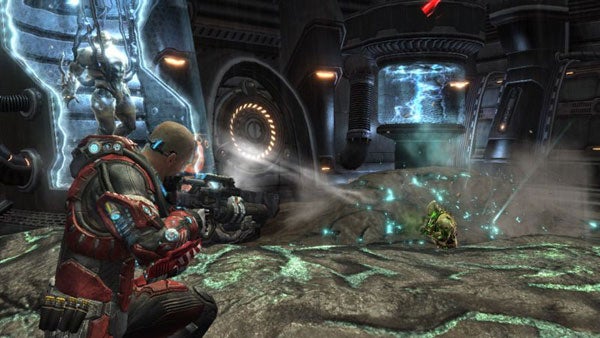
All things considered, it’s hard to feel too positive or too negative about Fracture, or really anything at all. I just find it disappointing that a game with some promising ideas never gets around to realising their potential. It also speaks volumes that about five hours in I thought the game was working up to a climax. I was actually disappointed that it didn’t end at this early stage! You shouldn’t be that tired of any game so soon. Buy Fracture by all means if you must have a new action game and you’ve exhausted all the other options, but unless you’re a genre completist there are far more entertaining ways to spend your hard-earned money.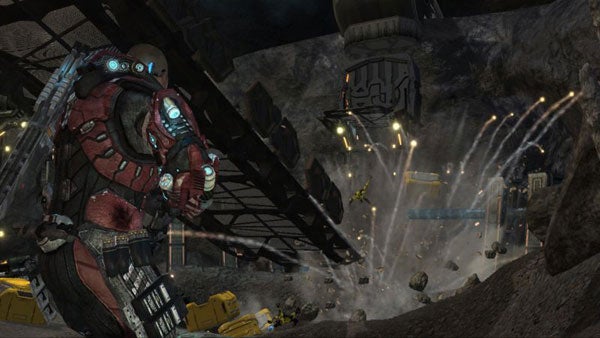
”’Verdict”’
Not good, not bad, but utterly forgettable. Fracture wastes all its good ideas in a stream of monotonous battles and dull design.

